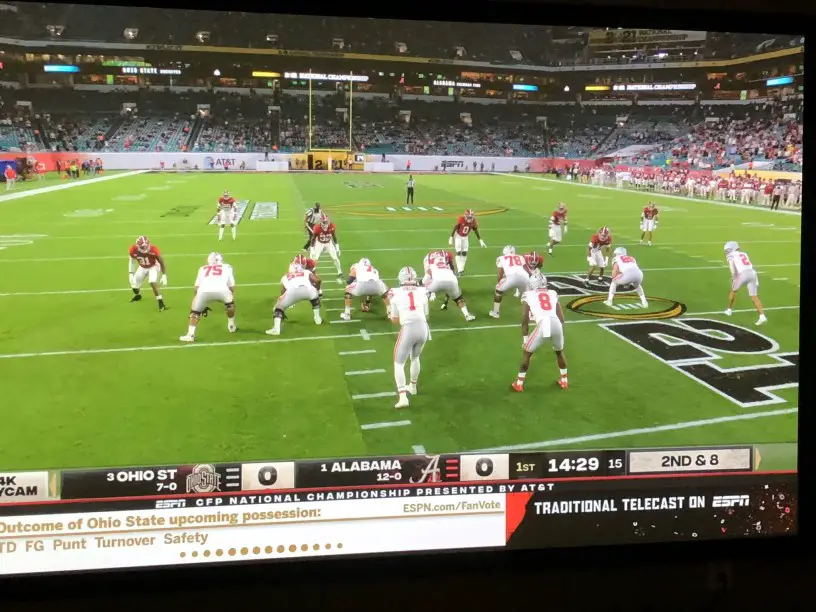With the emergence of 4K resolution, sports enthusiasts have been eagerly awaiting the opportunity to watch live sports in native 4K resolution. However, due to limitations in the production and broadcast infrastructure, most live sports broadcasts are still only available in upscaled 4K. In this article, we will explore the differences between native 4K and upscaled 4K for live sports and whether one offers a better viewing experience than the other.
Click Amazon: See Today’s 1-Day-Only Sales!
First, let’s define what we mean by native 4K and upscaled 4K. Native 4K resolution refers to a video that is shot and produced in 4K resolution, with a resolution of 3840×2160 pixels. On the other hand, upscaled 4K refers to a video that is shot in a lower resolution, such as 1080p, and then processed and scaled up to 4K resolution using software algorithms.

One of the main advantages of native 4K is that it provides more detail and clarity than upscaled 4K. This is because native 4K has four times as many pixels as 1080p, resulting in a sharper image with more fine details. This increased level of detail can be especially important for sports broadcasts, where fans want to see the action as clearly as possible.
However, it’s important to note that not all sports broadcasts are created equal. Some sports, such as football, basketball, and soccer, may benefit more from native 4K than others. These sports typically involve a lot of fast-paced action and movement, which can be difficult to capture and display clearly in lower resolutions. On the other hand, sports like baseball and golf may not benefit as much from native 4K, as they involve less movement and action and rely more on precision and strategy.
Click Amazon: See Today’s 1-Day-Only Sales!
Another important factor to consider is the broadcast infrastructure. Producing and broadcasting a live sports event in native 4K requires a lot of resources and specialized equipment, including 4K cameras, editing software, and high-speed internet connections. Currently, many sports broadcasters are still in the process of upgrading their infrastructure to support native 4K broadcasts, which means that most live sports events are still only available in upscaled 4K.
While upscaled 4K may not offer the same level of detail and clarity as native 4K, it still provides a significant improvement over lower resolutions like 1080p. Upscaled 4K uses advanced algorithms to enhance the image quality, resulting in sharper edges and better color accuracy. For many viewers, the difference between native 4K and upscaled 4K may not be noticeable or may not justify the additional cost or technical requirements.
In conclusion, while native 4K offers more detail and clarity than upscaled 4K, the benefits may not be noticeable for all sports broadcasts or for all viewers. Factors such as the type of sport, the broadcast infrastructure, and the viewer’s preferences all play a role in determining which resolution is better for live sports. As the technology continues to evolve and more broadcasters adopt native 4K, we may see more sports broadcasts available in this format, but for now, upscaled 4K remains a viable option for sports fans who want to enjoy high-quality video.
Have a question about new TV technologies? Send it to The TV Answer Man at swann@tvanswerman.com Please include your first name and hometown in your message.

